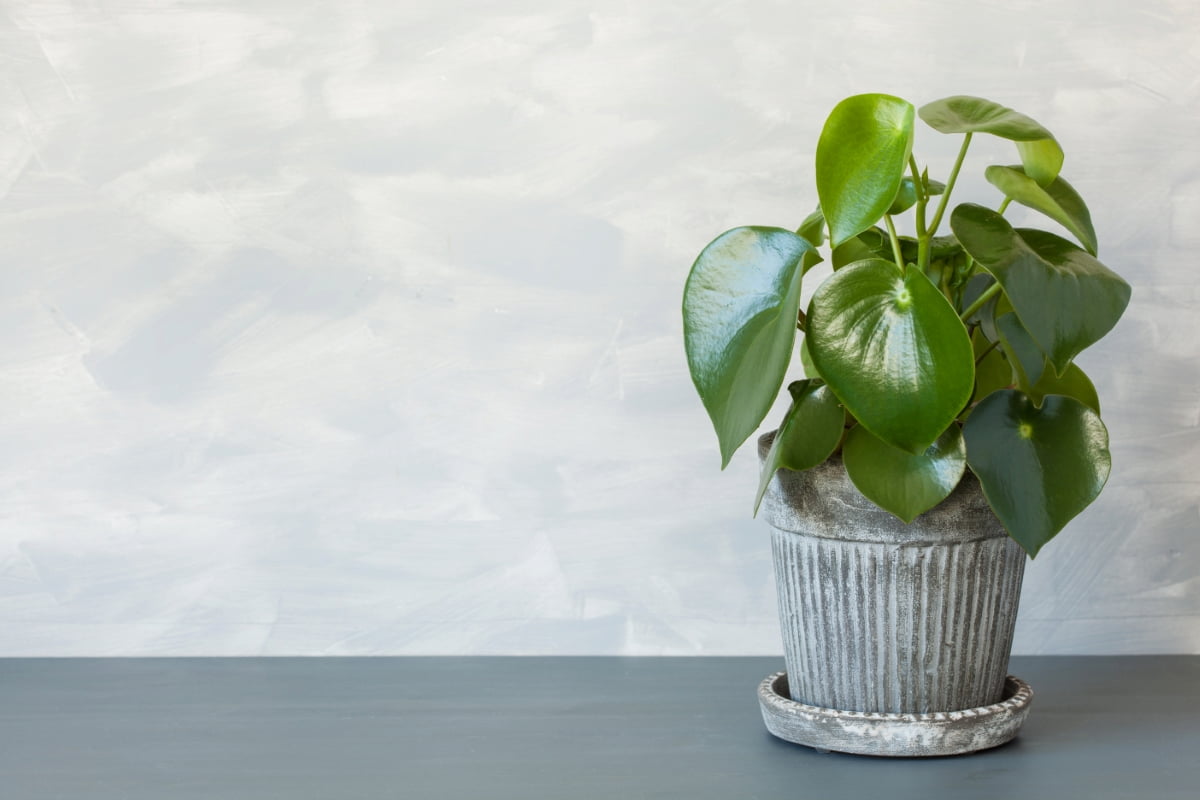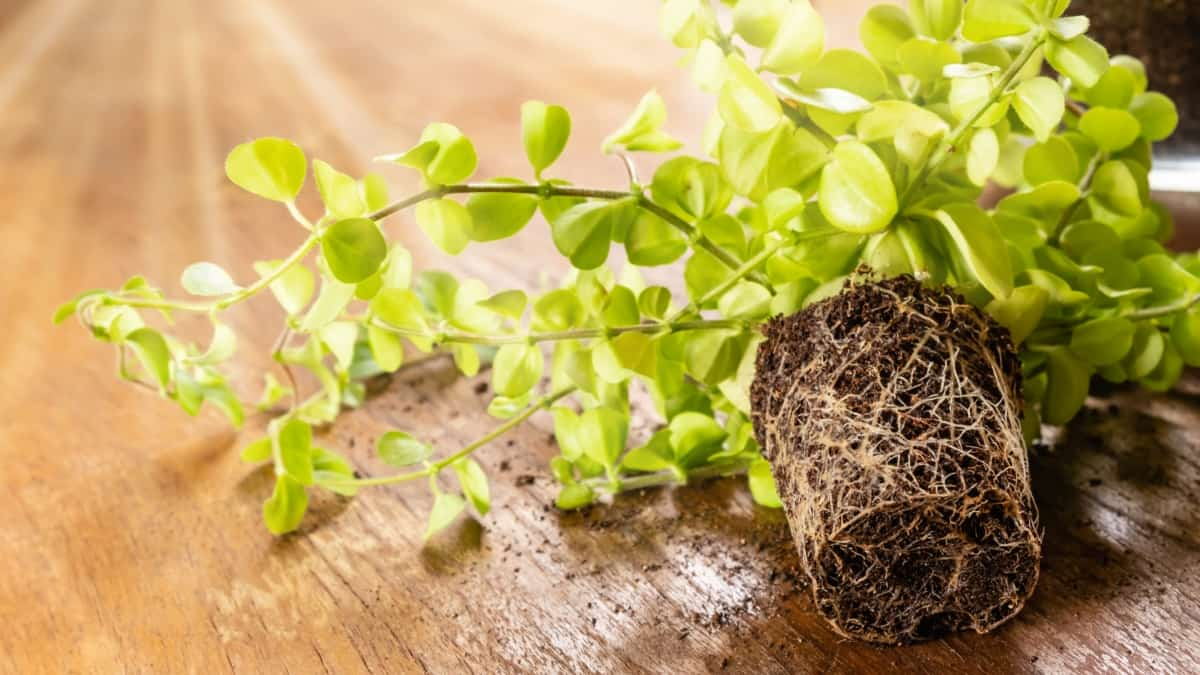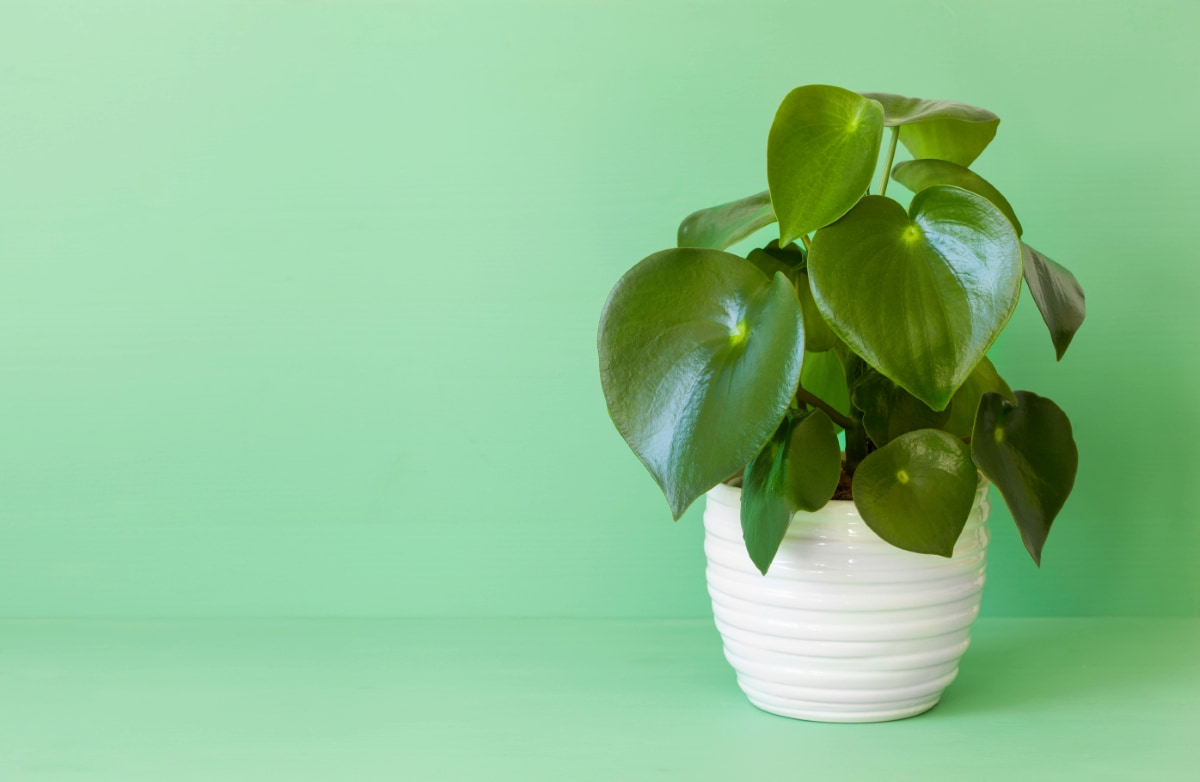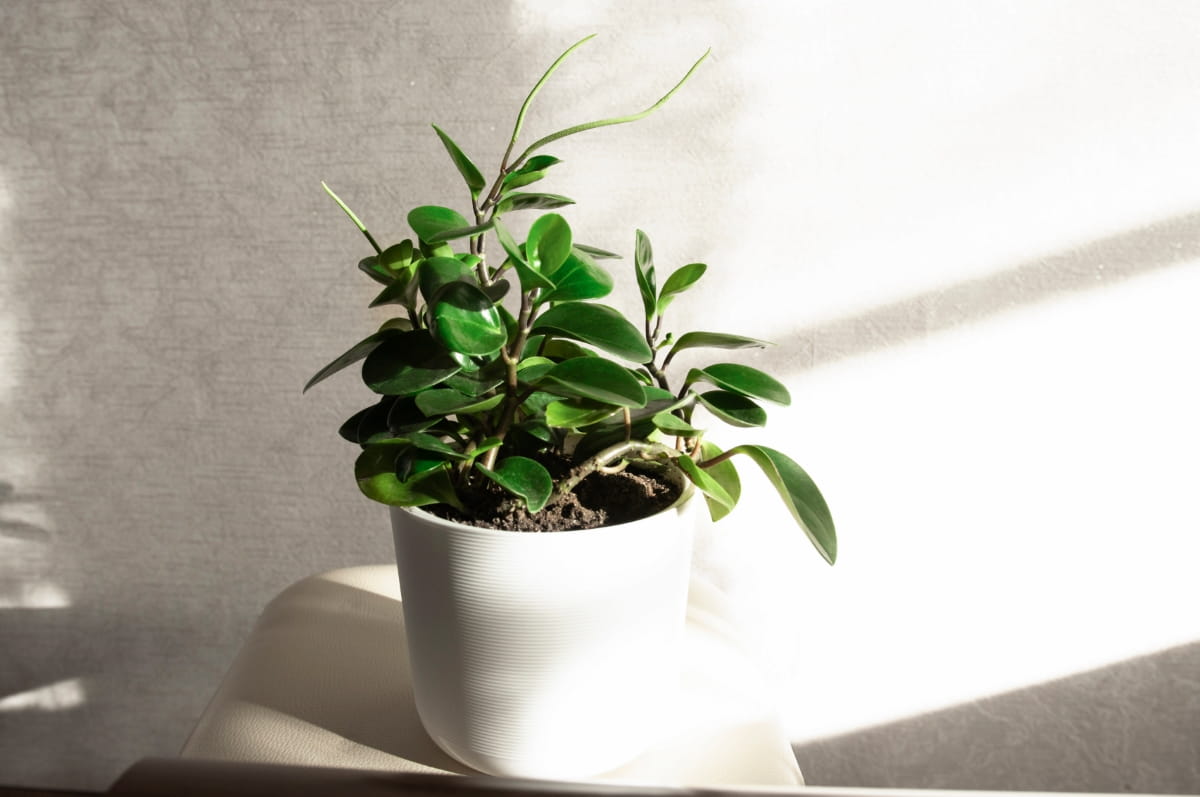Peperomia belongs to the large genus of the family Piperaceae. Their striking foliage and compact size make them popular additions to any indoor space or garden. Peperomia plants are popular among indoor enthusiasts due to their attractive foliage and low-maintenance nature.

Understanding Peperomia Propagation: A Comprehensive Guide
Peperomia propagation is an exciting process that allows you to create new plants from existing plants. Understanding the various propagation methods of Peperomia will give you the knowledge and confidence to expand your Peperomia collection. From their beautiful foliage to their compact size, Peperomias are perfect candidates for multiplying through different techniques.
Step-By-Step Guide on How to Propagate Peperomia Plants Successfully
- Choose a healthy parent plant with vibrant leaves and strong stems.
- Next, gather your tools and materials. You’ll need sharp scissors or pruning shears for making clean cuts, well-draining potting soil or water (depending on the method), small pots or containers for planting, and optional rooting hormone for faster root development.
- Now let’s dive into the different methods of Peperomia propagation: water propagation, leaf-cutting propagation, stem-cutting propagation, and division propagation.
- Water propagation involves placing cuttings in water until roots develop. Leaf-cutting propagation entails taking individual leaves from the parent plant and encouraging them to form new growth.
- Stem-cutting propagation requires snipping off stem sections with nodes intact to encourage root growth.
- Division propagation of Peperomia involves separating established plant clumps into smaller sections for replanting.
Different Methods of Propagating Peperomia: Explained in Detail
- One method is water propagation, which involves placing the Peperomia cuttings in water until they develop roots. This simple and effective method makes it a popular choice for beginners. Another method is leaf-cutting propagation, where individual leaves are removed and placed in soil or water until new growth emerges.
- Stem-cutting propagation is another reliable technique for Peperomia plants. It involves taking stem cuttings and allowing them to root in soil or water. This method allows for faster growth compared to leaf cuttings.
- Division propagation involves splitting clumps of mature Peperomia plants into smaller sections and replanting them individually. This method works well when the parent plant has already developed multiple stems or “pups.” Remember to exercise patience throughout the process, as propagating Peperomia takes time – sometimes weeks or even months before you see significant results.
In case you missed it: Propagation of Jaboticaba: Growing Conditions, and Fertilizer Requirements

Choosing the Right Time and Season for Peperomia Propagation
It is crucial to ensure successful growth and development of new plants. While Peperomias can be propagated at any time, it is generally recommended to do so during spring or summer when their growth is more active. During these seasons, plants are in their prime growing phase, which means they have higher energy levels and are more likely to produce strong roots. This increased vigor increases the chances of successful propagation.
By propagating your Peperomia plants during spring or summer, you take advantage of optimal conditions that promote healthy root development and faster establishment of new plants. This ensures a higher success rate in propagating your beloved Peperomias.
Essential Tools and Materials for Propagating Peperomia Plants
You’ll need a sharp and clean pair of scissors or pruning shears. These will help you make precise cuts when taking stem or leaf cuttings. It’s important to keep your tools clean to prevent the spread of diseases between plants. Next, you’ll need small pots or containers for planting your propagated cuttings.
Make sure these pots have drainage holes at the bottom to avoid waterlogging. A well-draining potting mix is also crucial for healthy root development. You can purchase a ready-made mix specifically formulated for succulents or create your own by combining equal parts of perlite, peat moss, and coarse sand.
Water Propagation: A Simple and Effective Method for Peperomia
Water propagation is a popular and straightforward method for propagating Peperomia plants. It’s a great technique for beginners or those who prefer a low-maintenance approach to plant propagation. You’ll need a healthy Peperomia cutting with several leaves intact to start water propagation.
Cut off the stem below the lowest leaf and remove the bottom two leaves from the cutting. Next, place your cutting in a glass or jar filled with clean, room-temperature water. Ensure that at least one node (the small bump where leaves emerge) is submerged in water. Nodes are crucial because this is where new roots will form.
Once your cuttings have developed strong roots, you can transfer them into potting soil or continue growing them in water if preferred. Water propagation can be exciting to witness new growth and expand your collection of beautiful Peperomia plants. How long to propagate Peperomia in water? On average, roots can take 2-6 weeks to develop on your Peperomia cutting.
Leaf Cutting Propagation: How to Multiply Your Peperomia Collection
Leaf-cutting propagation of Peperomia is an excellent method to multiply these beautiful plants. Select a healthy leaf from your mature Peperomia plant. Ensure the leaf is fully developed and free from any damage or disease. Cut the leaf carefully below the node using a sharp, sterile knife or scissors. Remove any lower leaves near the stem once you have your leaf-cutting ready. This will allow optimal airflow and prevent rotting.
You can place your cutting in water or directly into moist soil. If you choose water propagation, fill a glass jar with clean water and submerge the stem without letting any leaves touch the water surface. Please place it in bright but indirect light. How to propagate Peperomia in soil? Prepare a well-draining potting mix for soil propagation that retains moisture without becoming soggy.
In case you missed it: Avocado Tree Propagation and Pollination: Methods and Strategies

Gently insert the stem into the soil about an inch deep and lightly press around it for stability. Keeping your cuttings warm and consistently moist while they develop roots around 21-24°C is ideal for most Peperomias. With proper care and attention, you’ll soon see new growth in your propagated Peperomia plants.
Stem Cutting Propagation: A Reliable Technique for Peperomia Plants
Stem-cutting propagation is a reliable and effective technique for propagating Peperomia plants. It involves taking a stem cutting from the parent plant and encouraging it to develop roots and grow into a new plant. Select a healthy stem with several leaves to propagate Peperomia through stem cuttings. Make a clean cut using sharp scissors or pruning shears. It’s important to use sterile tools to prevent any potential infections.
Once you have your stem cutting, remove any lower leaves near the base of the cutting. This will help encourage root growth at that end. Next, insert the bottom part of your stem cutting into moist potting soil or a well-draining mix. Make sure to bury it deep enough to stand upright on its own. After a few weeks, you should see new growth, indicating successful root development.
Division Propagation: Splitting Peperomia Clumps for New Growth
This method involves separating the clumps or clusters of the plant into smaller sections, each with its roots and foliage. To begin the process of division propagation of Peperomia, carefully remove the entire Peperomia plant from its pot or container. Next, inspect the clump and identify natural divisions or areas where you can separate it into smaller sections.
Carefully cut through these divisions using a sharp and clean knife or scissors. Make sure that each section has an adequate amount of healthy roots attached to it. It’s important not to damage or tear roots during this process as they are crucial for successful growth. Division propagation allows you to expand your collection of Peperomias quickly and easily. Plus, it promotes healthier growth in both the parent plant and its offspring by preventing overcrowding and resource competition.
Troubleshooting Common Issues in Peperomia Propagation
One common issue is root rot, which occurs when the cuttings are overwatered or sit in water for too long. To avoid this, ensure your Peperomia cuttings are placed in well-draining soil, and don’t overwater them. Another issue may be the development of fungus or mold on the leaves or soil. To prevent this, ensure good ventilation and maintain a moderate humidity level. Sometimes, Peperomia cuttings may not root or take longer than expected to establish roots. This could be due to low light conditions, improper temperature, or lack of nutrients.
In case you missed it: Seed Propagation of Pawpaw: Germination Process, Sowing, and Seedling Care

Providing adequate lighting, maintaining optimal temperature, and using a balanced fertilizer can help promote successful rooting. Pests like mealybugs and spider mites can infest Peperomias during propagation. Look for any signs of pest damage, such as yellowing leaves or webbing on the plant. If you notice pests, treat them immediately with organic insecticidal soap or neem oil.
Conclusion
Belonging to the family Piperaceae, Peperomia can be found in all corners of the tropical and subtropical world. Peperomia plants are popular among enthusiasts due to their unique foliage and low maintenance requirements. Its unique foliage patterns and compact size make it an good choice for indoor gardens and landscapes.
- Feed Your Flock for Less: Top 10 Tips to Save on Chicken Feed
- Ultimate Guide to Ossabaw Island Hog: Breeding, Raising, Diet, and Care
- Hatching Answers: The Top 10 Reasons Your Chickens Aren’t Laying Eggs
- Eggs and Economics: Breaking Down the Cost of Raising Backyard Chickens
- Defend Your Greens: Proven Methods to Keep Iguanas Out of Your Garden
- Ultimate Guide to Cinnamon Queen Chicken: A Comprehensive Guide for Beginners
- Ultimate Guide to California Tan Chicken: Breeding, Raising, Diet, Egg-Production and Care
- Ultimate Guide to Marsh Daisy Chicken: Breeding, Raising, Diet, and Care
- 10 Types of Chicken Farming Businesses You Can Start for Profits